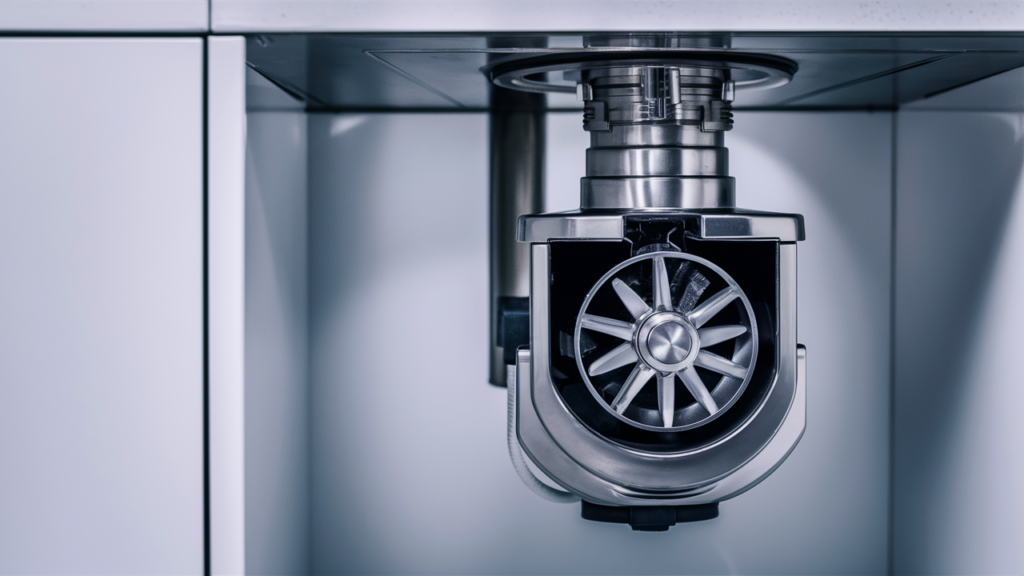
After installing a new garbage disposal, it’s important to check that everything is draining correctly. Performing a quick test can help prevent potential clogs, leaks, or backups down the line. It’s a straightforward process that only takes a few minutes. Let’s walk through the steps to verify that your garbage disposal is working properly and that your sink is clear.
Common Drainage Issues
When checking your garbage disposal, keep an eye out for these common drainage issues that can signal a problem:
- Slow draining: If water takes a long time to drain, this could indicate a partial clog in the disposal or drain line.
- Standing water: Water that remains stagnant in the sink may mean the disposal’s drain pipe is blocked.
- Gurgling noises: Gurgling sounds often indicate air trapped in the drain, which might be caused by a clog or partial blockage.
Causes of Poor Drainage
Several factors can contribute to drainage issues after installing a garbage disposal:
- Improper installation: A misaligned or poorly connected drain pipe can lead to leaks or poor drainage.
- Debris buildup: Food particles or grease left behind can cause a buildup in the pipes or disposal.
- Faulty disposal unit: A malfunctioning disposal might not grind food waste efficiently, resulting in slow drainage.
How to Test and Troubleshoot Garbage Disposal Drainage
Follow these steps to ensure your garbage disposal and drainage system are working properly and to identify any potential issues.
Prepare for the Drainage Test
- Verify the garbage disposal is securely mounted to the sink flange.
- Check that the P-trap and drainpipe are tightly connected and aligned correctly.
- Tighten all hose clamps and seals, including those on the dishwasher inlet, to prevent leaks.
- Run a small amount of water through the sink and inspect all connections for drips or pooling water.
- Tighten connections or adjust seals if leaks are found.
Conduct a Basic Water Flow Test
- Plug the sink drain and fill it halfway with water.
- Remove the sink stopper and observe how the water drains.
- Look for slow drainage or pooling, which could indicate clogs or installation issues.
- Inspect all connections (flange, P-trap, and drainpipes) for leaks during drainage.
Test Garbage Disposal Operation
- Turn on cold water at the faucet and let it flow into the disposal.
- Switch on the garbage disposal and listen for smooth operation.
- Gradually drop small amounts of soft food scraps into the disposal.
- Observe for water backing up or slow drainage, which might point to a clog or connection issue.
- Check all connections and seals for leaks and tighten them if needed.
Inspect the P-Trap and Drainpipe
- Verify the P-trap is securely connected to the disposal and drainpipe.
- Look for gaps, misalignments, or loose fittings.
- If drainage is slow, loosen the slip nuts on the P-trap, using a bucket to catch water and debris.
- Inspect and clear any clogs from the P-trap using a brush or running water.
- Reattach the P-trap and tighten all fittings.
Check the Dishwasher Connection (If Applicable)
- Locate the dishwasher drain hose and clamp it tightly to the dishwasher inlet.
- Confirm the knockout plug in the dishwasher inlet has been removed for new installations.
- Clear any debris from the inlet.
- Run a short dishwasher cycle and observe how the water drains.
- Check that water does not back up into the sink or dishwasher and inspect for leaks.
Address Air Gaps or Venting Issues
- Inspect the air gap for clogs by removing the cap and clearing debris with a brush or running water.
- Run cold water while turning the disposal on and off to release trapped air pockets.
- If slow drainage or bubbling persists, investigate venting obstructions in the plumbing system.
- Resolve air gaps or venting problems to restore proper drainage.
Maintenance Tips for Smooth Drainage
To keep your garbage disposal working well and prevent drainage problems, try these maintenance tips:
- Regularly clean the disposal: Use ice cubes or a lemon rind to help clean the grinding components and prevent odor buildup.
- Avoid dumping large food scraps: Only feed small amounts of food waste into the disposal at a time to avoid clogging.
- Run hot water after each use: This helps flush food waste and grease down the drain and prevents buildup.
In Summary
Here’s the bottom line: checking your garbage disposal and drainage system only takes a few minutes, but it can save you from dealing with clogs, leaks, or worse later on. A few simple tests are all it takes to make sure your system is draining well.
We’ve covered the basics: check for leaks, test the water flow, and listen for any unusual sounds. And if you notice anything odd, don’t wait. Take action right away. Stick with these tips, and you’ll keep everything running smoothly without much effort. A little attention goes a long way in preventing a mess later.
